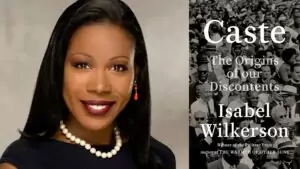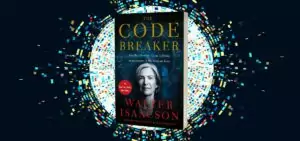Book Review Examples and Samples
Recent Articles

Oct 19 2023
“Caste: The Origins of Our Discontents” by Isabel Wilkerson Book Review Sample
2 min read

Oct 07 2017
A History of the World Since 9/11, by Dominic Streatfeild Essay Sample, Example
4 min read
Book Review Examples and Samples
In the realm of academic writing, one must tread with precision, grounding arguments in robust research, and conveying thoughts in a formal, polished tone. Just as one scrutinizes a research paper, reviewing a book demands an equally rigorous and systematic approach. A book review not only assesses the content of a book but also allows readers to understand its significance in the broader context of literature and scholarship.
What Is a Book Review Example?
Ever picked up a book and wondered if it’s worth the read? That’s where a book review steps in. Think of it as a friend giving you the lowdown on a story they’ve just read. It’s more than just saying, “It’s good” or “I didn’t like it.” A proper book review dives into the heart of the book. It talks about the journey the characters go on, the twists and turns of the plot, and the big ideas the writer is trying to share. Instead of just skimming the surface, it offers a deeper look, giving those considering the book a heads-up on what awaits them. Whether you find them in a classroom assignment, a fancy literary magazine, or your favorite weekend read, these reviews are like mini-guides helping readers decide their next bookish adventure.
Why Do Students Need to Write Book Review Examples?
Reading a book is like going on a personal adventure. Each page can make you feel different emotions, and you get lost in another world. But when students write a book review, it’s like taking that adventure to the next level.
Writing a book review is not just about summarizing the story. The idea is to push students to dive deeper, challenging them to analyze every facet of the book — from the author’s underlying messages and the twists and turns of the plot to the motivations driving the characters. Through this exercise, they don’t just passively absorb the story; they interact with it, dissect it, and form opinions about it.
Such a critical book review example, beyond being assignments, acts as a sharpening stone for students’ minds. They encourage a more active form of reading, urging students to think critically and consider how a particular book fits into the broader picture. Through this journey, students move beyond just being consumers of stories; they become active participants in them!
The Difference Between Various Genres
Genres, the various flavors in the literary world, offer readers a myriad of experiences, tailored by the unique conventions and characteristics inherent to each. Each genre is an invitation to a distinct realm, with reviews acting as previews of these vast universes.
Consider fantasy, a genre teeming with magic, mythical creatures, and far-off lands each in its own time and place. A review centered on a fantasy novel might delve into the intricacies of its world-building, pondering over the realms and races crafted from scratch. It’ll question the credibility of its magic system and the depth and richness of its history and lore. It’s about immersing in an entirely different reality, stitched together by imagination.
Move to the suspenseful corridors of detective fiction, where shadows hold secrets and every character is a suspect. Reviews for detective novels often hinge on the layered mysteries, the intellectual prowess of the investigator, and the heart-stopping, unexpected revelations that punctuate the narrative. It’s the art of deduction, of chasing clues and unveiling truths.
Then, there’s the tender realm of romance, where hearts, emotions, and relationships take center stage. A review of a romance novel is often tinted with discussions about character chemistry, the depth and rawness of their emotions, and the beautiful dance of love and heartbreak orchestrated by the narrator. It’s about exploring the spectrum of human emotions, from the fluttering butterflies of a first glance to the profound pain of unrequited love.
Science fiction, historical, horror – the list is endless. Each genre offers its unique palette of experiences, challenges, and emotions. Consequently, reviews must honor these distinctions, offering potential readers a genuine snapshot of the journey that awaits them in every book.
What Should a Book Review Sample Contain?
Crafting a meaningful book review requires more than just voicing one’s preferences; it demands a systematic and comprehensive breakdown of the book in question. This deconstruction serves as a roadmap for potential readers, guiding them in their decision-making process.
To begin with, the Introduction sets the stage. Here, the reviewer introduces the book’s core premise and provides insights into the author’s primary objectives. It’s a window into the book’s soul, offering readers a tantalizing glimpse of the journey they might undertake.
The heart of the review lies in the Content Analysis. This section plunges into the depths of the book, meticulously dissecting its various components – the plot’s intricacies, the character’s motivations and development, the backdrop against which the events unfold, and the unique narrative voice adopted by the author.
Following this deep dive is the Critical Evaluation. Armed with insights from their analysis, the reviewer offers a balanced assessment, weighing the book’s strengths against its shortcomings. This section isn’t about mere likes or dislikes but an informed, reasoned critique.
Concluding the review, the Conclusion encapsulates the reviewer’s final verdict. Here, the overarching sentiments are crystallized, guiding readers on whether embarking on this literary journey would be a time well-spent or a venture they might wish to skip.
A Step-by-Step Guide on How to Prepare to Write a Book Review
The art of writing academic book review examples is an involved process, demanding not just a deep understanding of the book in question, but also an organized approach to translating those insights into words. Here’s a comprehensive, step-by-step guide to help navigate this task with finesse.
Selecting the Right Book
Your initial choice of a book is pivotal, obviously, the most important. The process begins long before you even start reading. Aim to choose a work that either aligns with your existing interests or challenges your typical reading habits. Exploring unfamiliar terrains can sometimes provide the most profound insights. This genuine investment or curiosity in the content frequently results in a review that isn’t just thorough but brimming with authenticity. Remember, passion and enthusiasm are palpable, even in written words.
Immersive Reading
As you begin the reading journey, it’s essential to let the narrative envelop you entirely. Avoid skimming or rushing through chapters. Instead, savor each segment, allowing yourself to fully connect with the characters, settings, and plot developments, creating a new idea for your review each time. Such a reading experience ensures you grasp the nuances that the author intricately weaves, enriching your final analysis.
Note-taking
Keep a dedicated notebook or digital document to record your evolving reactions. As characters develop, plots twist and themes emerge, jot down these observations. Don’t just capture the significant moments; sometimes, subtleties can profoundly impact the overall narrative. Also, earmark impactful quotes; they can be powerful allies when substantiating your points during the review process.
Reflection
The end of the book is not the end of your task. Post-reading reflection is a critical phase. Ponder on the overarching message, the emotions it stirred, and its position within its genre. Was there a unique angle or perspective it presented? Such introspection helps in understanding the narrative’s broader context and its personal impact on you.
Research the Author
Familiarize yourself with their previous works, personal experiences, or historical context during the time of writing. Such knowledge often reveals underlying themes or motivations in the narrative, adding depth to your review and more context about the narrator.
Structuring the Review
Use your notes and reflections as a foundation, and build a clear structure for your review. Ensure it flows seamlessly, covering everything from the introductory overview, detailed analysis, and personal opinions, to a succinct conclusion. A well-structured review aids the reader in understanding both the narrative and your perspective.
Writing with Intenet
Penning down the review isn’t just about summarizing the book in the first place. Your intent should be clear – to present a balanced overview, emphasizing both the strengths and weaknesses of the narrative. As you articulate your thoughts, your primary goal should be to encapsulate the essence of the story and guide potential readers on what awaits them.
Should You Give Out Spoilers When Writing a Book Review?
The question of whether to include spoilers in a book review has long been a contentious one, sparking animated debates among bibliophiles and reviewers alike. On one hand, providing detailed information can arm potential readers with a clearer sense of what to anticipate, enabling them to make informed decisions about whether a particular narrative aligns with their tastes. Proponents of this viewpoint argue that, in some cases, knowing pivotal plot points in advance can even enhance the reading experience, allowing the reader to focus on the nuances of character development, theme exploration, and the author’s craft.
On the other hand, many firmly believe that a book’s magic lies in its element of surprise. Unearthing twists organically, as the author intended, allows readers to experience the full spectrum of emotions — from shock to revelation — in their raw, unadulterated form. By this logic, revealing significant spoilers is akin to unwrapping someone else’s present; the thrill of the unknown is unjustly taken away.
Given these polarized views, the middle ground becomes essential. A well-crafted review should be similar to a movie trailer, offering enough to pique interest while withholding just enough to ensure the story remains fresh and intriguing. It’s a tightrope walk, balancing the need to discuss the book’s content and themes without revealing so much that the narrative’s core mysteries are laid bare.
Ultimately, the decision lies in the hands of the reviewer. But it’s always wise to ensure that potential readers are offered a glimpse, not a roadmap, to the heart of the story, preserving the magic of discovery.
The Specifics of Writing a MLA Format Book Review Example
The Modern Language Association (MLA) format is one of the widely accepted citation styles in academic circles, and understanding its nuances is paramount when drafting academic book reviews. Here’s a deeper dive into the specifics.
Citation of the Book
At the outset, the reviewer must correctly cite the book. For instance, a book authored by John Smith titled “Literary Wonders” published in 2021 would be cited as: Smith, John. Literary Wonders. Publisher, 2021. This citation provides a standardized reference point, allowing readers to easily locate and verify the source material.
Paragraph Structure
Unlike casual reviews, MLA formatted book reviews favor structured paragraphs. Start with an introduction that offers a brief overview of the book’s main themes, followed by middle paragraphs dissecting various elements like plot, character development, and thematic content. Conclude with a summation of your overall thoughts and critique.
Formatting Rules
MLA has distinct formatting guidelines. Reviews should be double-spaced, with 1-inch margins on all sides. The font, typically Times New Roman, should be set to 12-point size. Page headers with your last name followed by the page number should be inserted in the top right corner.
Direct Quotations
If quoting directly from the book, ensure proper in-text citations. For instance, if quoting a line from page 45 of John Smith’s “Literary Wonders,” it should appear as: “Quoted text” (Smith 45).
Consistency
It’s not merely about adhering to rules but ensuring consistency throughout the review. If you’re italicizing book titles in the beginning, maintain that throughout. Consistent application of rules reflects attention to detail and academic rigor.
Familiarizing oneself with these concrete points ensures not only adherence to academic standards but also lends credibility and professionalism to one’s work. As students strive for academic excellence, mastering the art of MLA formatted book reviews can prove to be an invaluable skill in their scholarly journey.
Tips on How to Write an Engaging Book Review
An engaging book review does more than convey an opinion; it inspires the reader. Remember, your goal is to guide, enlighten, and perhaps, entice your reader to embark on the same literary journey you experienced. Here are some tips to make the process easier for you.
Craft a Compelling Introduction: Start with an attention-grabbing sentence or a quote from the book. Your introduction should provide a taste of the book’s essence and hint at your overall impression. It sets the tone for the entire review.
Be Objective Yet Passionate: While it’s essential to maintain a degree of objectivity, especially if there are elements of the book you didn’t like, it’s equally crucial to let your genuine feelings about the book come through. Your passion can be infectious, drawing readers to the book or cautioning them effectively. Descriptive and emotive language can vividly convey the atmosphere of the book. Instead of saying, “The book was thrilling,” you might say, “The book sent shivers down my spine with every unexpected turn.”
Stay Concise but Detailed: A great review isn’t necessarily a long one. Focus on the most impactful elements of the book, diving into details that stood out, without meandering into unrelated territories. Discuss how the book made you feel and why. Was there a moment that made you tear up or laugh out loud? These personal touches can resonate strongly with potential readers.
Address the Author’s Style: Every author has a unique voice. Whether it’s poetic prose, sharp wit, or gripping suspense, highlight the nuances of the author’s writing style and how it complements the narrative. If there are elements you didn’t appreciate, present them alongside the book’s strengths. This balanced approach assures readers of your credibility.
End with a Strong Conclusion: Summarize your thoughts and give a final verdict. Would you recommend the book? Who would you recommend it to? This provides a neat closure to your review. Pose a question at the end of your review or share a personal anecdote related to the story. Engaging the reader can turn your review from a monologue into a conversation, fostering a deeper connection.
Proofread and Revise: A well-written review, free from grammatical errors and typos, not only enhances readability but also showcases professionalism and respect for both the author and your readers.
Incorporating these tips ensures that your book review isn’t just informative but also compelling, guiding potential readers in their literary choices with grace and authority.
FAQ
What is an example of a book review?
An example of a book review would be:
“In Harper Lee’s seminal work, ‘To Kill a Mockingbird’, the essence of the American Deep South in the 1930s is vividly captured through the eyes of young Scout Finch. Lee weaves a tale that is both a poignant coming-of-age story and a searing indictment of racial prejudice. With characters like the honorable Atticus Finch and the enigmatic Boo Radley, Lee crafts a narrative that is as gripping as it is enlightening. The novel’s exploration of morality, class, and the loss of innocence is both timely and timeless.”
What are the 5 parts of a book review?
The five parts of a book review are introduction, summary, analysis, personal opinion, and conclusion. Each serves its own purpose and shouldn’t be overlooked in the process.
What is a simple book review?
A simple book review is a concise evaluation of a book, highlighting its main plot, characters, and the reviewer’s opinion. Instead of diving deep into analysis, it offers a snapshot for readers to quickly understand the book’s essence and the reviewer’s feelings. For example, “John Green’s ‘The Fault in Our Stars’ is a touching tale of two teenagers battling cancer, exploring love, life, and loss. A must-read for those who cherish heartfelt stories.”
How do you start a book review sentence?
Starting a book review sentence can be approached in various ways. Try quoting a memorable line from the book: “As George Orwell famously wrote, ‘All animals are equal, but some animals are more equal than others’…”
Also, you can consider making a general statement about the genre or theme: “Historical fiction often transports us to eras long gone, but…”
And finally, sharing a personal reflection: “Having always been fascinated by space exploration, reading Andy Weir’s ‘The Martian’ was an exhilarating experience for me…”
What makes a good book review?
A good book review offers a balanced perspective, combining objective analysis with personal reflection. It’s well-structured, beginning with an introduction and ending with a conclusion, offering readers clear insights into the book’s content and its significance. Furthermore, a good review avoids major spoilers, provides context and evaluates the book’s strengths and weaknesses. It also delves into the emotional and intellectual impact of the book, guiding potential readers on whether it might resonate with them. Authenticity, clarity, and a genuine passion for literature shine through in a well-crafted review.













